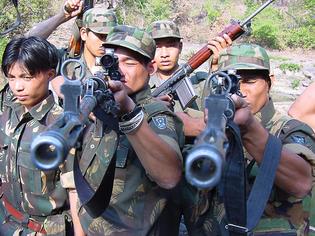
India’s Northeast is a geo-politically strategic region. Earlier, it was popularly known as the seven sisters of India and by its distinct diversity it is a mini-India. Now it comprises eight states – Assam, Arunachal Pradesh, Nagaland, Manipur, Tripura, Mizoram, Meghalaya and Sikkim and is spread over a 262,179 square kilometer area. The eight states contain a total population of 39 million. The region is encircled by countries – Bangladesh, Bhutan, Myanmar, China and Nepal. It however connects to the rest of mainland India only through a narrow and tenuous land corridor known as the ‘chicken’s neck’, measuring merely 22 kilometers.
Despite its abundant natural beauty and diversity, Northeast is widely known for a bad reason. The decades of insurgency and frequent ethnic conflicts are to be attributed to it for the reputation it has earned in the last decades.
The mushrooming of militant organisations has become the hallmark of the region forcing the government of India to initiate military strikes and pressuring the bordering countries to dismantle the militant camps lodge in the jungles. Certainly, for no other reason than this, the Northeast is called the ‘hotbed of militants’. A brand name everyone hates to acknowledge.
It’s certainly a crisis, long have we realised. Yet, it’s turning into chaos and its solutions are a nightmare. There is a rapid rise of insurgent activities and regional movements in the Northeast – a new trend leading us nowhere. New militant organisations are being formed under the guise of fighting for a genuine reason, especially in the states of Assam, Nagaland, and Tripura. Of late, the entry of Bangladeshi terrorist organization Harkat-ul-Jihad (HuJI) are revolutionising the militant groups in the region – sure, a locomotive engine for newly formed insurgent groups.
It’s traumatic, but a reality check point, according to an unofficial figures, there are more than 120 militant groups operating in the regions. Technically speaking, out of this awesome figure nearly thirty indigenous armed groups – like, NSCN-IM, ULFA, NDFB, Tripura Tiger Force are waging wars for sovereignty against the government of India.
The demands of the different militant groups range from autonomy within the provisions of the Indian Constitution to outright secession. Many of these are said to be either China sponsored or patronised by the Pakistani Inter Service Intelligence (ISI). Such militant movements started early with India’s independence, in 1947.
At one point of time, though these enjoyed vast popular support since these were in the formative years, voiced genuine grievances of the people such as poor governance, alienation, lack of development and an apathetic attitude from the central government in New Delhi; soon they converted this opportunity to exploit the people. Now, they are the real nuisance value of the society putting obstacles to modernity – certainly everyone love to embrace.
No doubt, the insurgency dilemma in the northeast needs a genuine healing touch. Over the years, both the state and the central government have used tactics from negotiations to military operations to bring stability and to rooting out militants in the region. Nevertheless, the region remains a potential tinderbox.
Of late a number of insurgency groups like, NSCN-(IM), NSCN (K), NDFB, factions of ULFA are in cease fire with the government of India for a couple of years. However, ceasefire policy of the lackadaisical attitude of the government has widened the gap between the government and the militant organisations from the main issue. Lack of political will and sincere effort for lost lasting solution to the demands for the insurgency groups is never given importance; rather the extension of the cease is discussed more often than the problem, which needs solution.
The NSCN-IM, at one point of time termed as the deadliest of all insurgency groups in the Northeast have been fighting for sovereign a Nagaland for more than five decades entered into ceasefire agreement with the Centre in 1997. Even after the elapsed of twelve years little progressed have been made. Similarly, NDFB is ceasefire since 2005, yet so far, no formal talk was held. It’s a sign of slow death of the ceasefire agreement. It certainly will erupt like a volcano in the near future.



